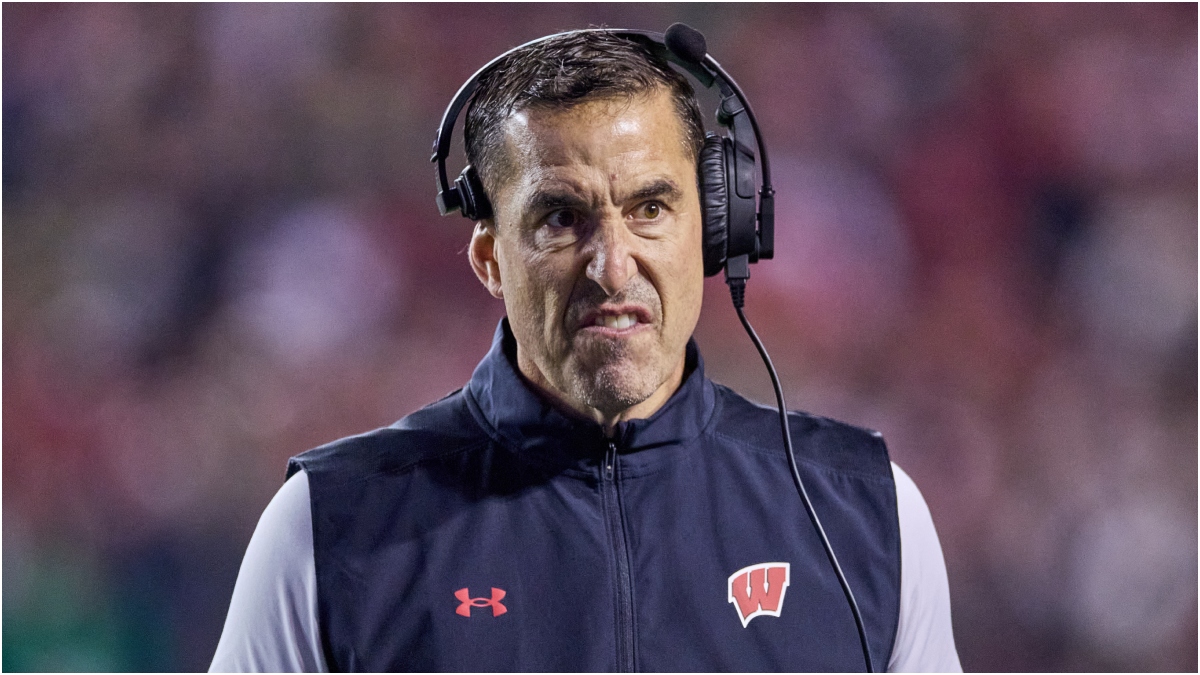Pennsylvania
Bipartisan Pennsylvania Senators File Bill To Let Medical Marijuana Patients Grow Their Own Plants

Bipartisan Pennsylvania senators have introduced a bill that would expand the state’s medical cannabis program by giving patients 21 and older the right to grow their own plants for personal use.
The legislation, filed on Thursday by Sens. Sharif Street (D) and Dan Laughlin (R), along with six other senators, would allow registered patients to cultivate up to six cannabis plants.
Medical marijuana dispensaries would be able to sell cannabis seeds to patients, wh0 could then grow them in their own residence in an enclosed and locked location that’s outside of “ordinary” public view.
If a person doesn’t own their property, they would need to receive permission from the owner to grow marijuana.
The bill, which has been referred to the Senate Law and Justice Committee, doesn’t appear to set limits on the total number of plants that a household with more than one registered medical cannabis patient could have.
“Since the passage of Act 16 in 2016, Pennsylvania’s medical marijuana (MMJ) program has offered lifesaving medicine to communities across the Commonwealth,” the two senators wrote in a memo seeking cosponsors for the new bill. “However, there are still inefficiencies around MMJ that are well known, especially as it relates to cost and access.”
“The PA Department of Health indicated that patients in some counties must travel more than two hours in order to reach a dispensary,” they said. “This is simply not feasible for many Pennsylvanians. In addition, patients have also been vocal on the fiscal challenges around the rising costs of medicine and affordability.”
“It is critical that policy meet people where they are. By allowing medical marijuana patients to grow cannabis plants at home, we can help ease the cost and accessibility burdens for this important medicine. This legislation would go a long way towards helping everyday Pennsylvanians meet their health needs and ensuring everyone is treated equitably and fairly under Act 16.”
An individual who cultivates more than the allowable number of plants under the bill, or who gives away plants or cannabis products, would be subject to penalties, including the loss of their home grow rights.
Street and Laughlin also recently unveiled a separate bill to legalize marijuana for adult use.
The two senators previously sponsored a legalization bill that was not ultimately enacted last session, but they say that the newly filed proposal represents a significant improvement that they hope to advance.
In a co-sponsorship memo seeking support for the legalization legislation from colleagues, the senators emphasized that polling shows adult-use legalization “is supported by two-thirds of Pennsylvanians and has majority support in rural, suburban, and urban legislative districts.”
They also pointed out that legalization is estimated to bring in $400 million to $1 billion in tax revenue to the state.
—
Marijuana Moment is tracking more than 1,000 cannabis, psychedelics and drug policy bills in state legislatures and Congress this year. Patreon supporters pledging at least $25/month get access to our interactive maps, charts and hearing calendar so they don’t miss any developments.
Learn more about our marijuana bill tracker and become a supporter on Patreon to get access.
—
Meanwhile, in May, Pennsylvania House lawmakers filed separate bills to legalize marijuana sales through state-run stores and to provide permits for farmers and small agriculture businesses to cultivate cannabis once adult-use sales are allowed.
Gov. Josh Shapiro (D) supports enacting cannabis reform and proposed to legalize and tax adult-use marijuana as part of his 2023-2024 budget request in March.
The prospects of enacting legalization increased in the Keystone State after Democrats took control of the House following last year’s election. Republicans have maintained control of the Senate, however, but there are certain GOP members like Laughlin and Sen. Mike Regan (R) who’ve backed reform.
In February, Laughlin also sent a letter to state law enforcement, urging officials to take steps to protect gun rights for cannabis consumers, particularly medical marijuana patients, in light of a federal court’s recent ruling on the issue.
Street, who is sponsoring the newly filed legalization bill, took some advocates by surprise recently by joining other senators in urging a federal court not to authorize an overdose prevention site site in Philadelphia, while supporting a proposal to ban the harm reduction centers statewide.
Senate Votes To Let People Who’ve Used Marijuana Work At Intelligence Agencies Like CIA And NSA As Part Of Defense Bill

Pennsylvania
Severe thunderstorm watch issued for central Pennsylvania

A potent weather system is expected to bring severe thunderstorms to central Pennsylvania today, followed by an intense heat wave that could produce dangerous temperatures through next week.
Severe thunderstorms are forecast for Thursday afternoon and evening, particularly across the southeastern half of central Pennsylvania. They could bring strong wind gusts and isolated flash flooding.
The National Weather Service in State College has issued a severe thunderstorm watch for the eastern third of the state, effective until 9 p.m. Thursday.
The watch includes Dauphin, Cumberland, Perry, York, Adams, Lancaster and Lebanon counties.
Storms are expected to develop by late afternoon. The Weather Channel says the Harrisburg area is most likely to see storms around 3 p.m.
A significant heat wave will rapidly develop this weekend, with temperatures climbing into the 90s by Sunday and potentially reaching extreme levels early next week.
Summer begins at 10:42 p.m. Friday, coinciding with the year’s longest day with 15 hours and 6 minutes of daylight. Friday will offer a brief respite with slightly lower humidity and temperatures in the 80s, before the heat intensifies over the weekend.
Current weather radar
Generative AI was used to produce an initial draft of this story, which was reviewed and edited by PennLive.com staff.
Pennsylvania
Weather alert announced for strong thunderstorms in part of Pennsylvania Wednesday night

A report was issued from the National Weather Service on Wednesday at 6:51 p.m. for strong thunderstorms until 9 p.m. for Northern Clinton and Northern Centre as well as Potter, Cameron, Clearfield, Cambria and Somerset counties.
Shielding yourself from approaching lightning: Expert safety guidelines
Lightning strikes the United States approximately 25 million times each year, with the bulk of these electrical discharges occurring during the summer months. Tragically, lightning claims the lives of about 20 individuals annually, as reported by the weather service. The risk of lightning-related incidents escalates as thunderstorms draw near, reaching its peak when the storm directly looms overhead. However, it gradually recedes as the tempest moves away.
To ensure your safety during a thunderstorm, consider the following recommendations:
Lightning safety plan:
- When venturing outdoors, it’s crucial to have a lightning safety plan in place.
- Monitor the sky for threatening signs and listen for the sound of thunder. If thunder is audible, it’s an indication that lightning is nearby.
- Seek shelter promptly in a safe location, preferably indoors.
Indoors safety measures:
- Once you’re indoors, avoid using corded phones, electrical devices, plumbing fixtures, and stay away from windows and doors.
- Lightning can follow conductive pathways, and these precautions reduce the risk of electrical surges.
Wait for the all-clear:
- After the last lightning strike or thunderclap, wait at least 30 minutes before resuming outdoor activities.
- Lightning can strike even when a storm has seemingly passed, so exercise caution.
When indoor shelter isn’t available:
If you find yourself outdoors without access to indoor shelter during a thunderstorm, take these steps to maximize your safety:
- Avoid open fields, hilltops, or ridge crests, as they expose you to greater lightning risk.
- Steer clear of tall, isolated trees and other prominent objects. In wooded areas, stay close to lower stands of trees.
- If you’re in a group, ensure that individuals are spaced out to prevent lightning current from transferring between people.
- Camping in an open setting during a thunderstorm is strongly discouraged. If you have no alternative, set up camp in a valley, ravine, or other low-lying areas. It’s crucial to note that a tent provides no protection against lightning.
- Do not approach water bodies, wet objects, or metal items. Although water and metal do not attract lightning, they conduct electricity effectively and can pose significant risks.
In summary, when facing the threat of lightning, preparedness and vigilance are your best allies. By following these guidelines, you can significantly reduce the likelihood of lightning-related incidents and prioritize your safety.
Navigating heavy rain: Essential safety measures for wet roads
When heavy rain pours, the risk of flooding and treacherous roads rises. Here’s your guide from the weather service to staying safe during downpours:
Beware of rapid water flow:
During heavy rain, avoid parking or walking near culverts or drainage ditches, where swift-moving water can pose a serious risk.
Maintain safe driving distances:
Adhere to the two-second rule for maintaining a safe following distance behind the vehicle in front of you. In heavy rain, allow an additional two seconds of distance to compensate for reduced traction and braking effectiveness.
Slow down and drive with care:
If it is raining and the roads are wet, slow down. Take your foot off the accelerator and let your speed drop gradually. Never use the brakes suddenly because this may cause the car to skid.
Choose your lane wisely:
Stay toward the middle lanes – water tends to pool in the outside lanes.
Visibility matters:
Enhance your visibility in heavy rain by turning on your headlights. Watch out for vehicles in blind spots, as rain-smeared windows can obscure them.
Watch out for slippery roads:
Be extra careful during the first half hour after rain begins. Grime and oil on the road surface mix with water to make the road slippery.
Keep a safe distance from large vehicles:
Large trucks and buses can reduce your visibility with tire spray. Avoid tailgating and pass them swiftly and safely.
Mind your windshield wipers:
Overloaded wiper blades can hinder visibility. If rain severely limits your sight, pull over and wait for conditions to improve. Seek refuge at rest areas or protected spots.
When stopping by the roadside is your only option, position your vehicle as far off the road as possible, ideally beyond guardrails. Keep your headlights on and activate emergency flashers to alert other drivers of your position.
In the face of heavy rain, these precautions can make a significant difference in ensuring your safety on the road. Remember to stay informed about weather conditions and heed guidance from local authorities for a secure journey.
Advance Local Weather Alerts is a service provided by United Robots, which uses machine learning to compile the latest data from the National Weather Service.
Pennsylvania
Lowe’s worker allegedly shoots co-worker dead on forklift — confesses to murder in HR email

An unhinged Lowe’s employee shot and killed his coworker as he operated a forklift during an overnight shift at the hardware store — then bizarrely fessed up to the murder in an email to human resources.
Christopher Wasnetsky, 36, allegedly unloaded multiple shots at 44-year-old Jeff Moeller while he was working at a Lowe’s in Scranton, Pa., around 12:30 a.m. on Saturday, according to a criminal complaint obtained by the Scranton Times-Tribune.
Officers found Moeller — a father of three — was struck twice in the head and once in the back and was in critical condition, the outlet added.
The responding officers immediately rushed Moeller to Geisinger Community Medical Center, where he later died from his injuries.
Police quickly identified Wasnetsky as the alleged shooter and arrested him at the front entrance of the hardware store.
Wasnetsky told police that he was the one to call in the shooting 911 and brazenly told the operator that he was the “person that did it,” the outlet reported.
The suspect also said he sent an email to Lowe’s management and human resources before committing the shooting, stating what he was going to do and that it could have been avoided if someone had stepped in to address his claims earlier.
Wasnetsky claimed to investigators that Moeller had been harassing him at work and management had done nothing to resolve the ongoing issues despite his filings.
Wasnetsky told police he had been prepping to carry out the shooting by doing target practice in his backyard with a Springfield 9 mm handgun.
He admitted that he shot Moeller, who was on the forklift, in the chest from about five feet away.
Moeller then fell out of the machine and pleaded with the suspect for help as he struggled on the ground.
Wasnetsky told investigators he then shot Moeller twice in the head to end his suffering. He also said he planned to kill himself as well, but backed out, the outlet reported.
Wasnetsky was charged with first and third-degree murder and is currently being held on no bail at the Lackawanna County Prison.
He is scheduled to appear in front of a judge for his preliminary hearing on June 30th.
Moeller is remembered as a hardworking husband and father of three daughters, according to a GoFundMe page set up to help the family with funeral costs.
“If you knew Jeffrey, you knew he had the softest heart & the loudest laugh,” the fundraising page reads.
“He & Keisha had recently reconnected with their faith, and he was planning to be baptized this Father’s Day, alongside his daughters. He was so proud to be their dad, everything he did was for his family.”
One of his Lowe’s coworkers, Kassie Sierra, told the Scranton Times-Tribune that the father of three was a “kind man and great friend.”
“(He) worked hard for his wife and daughters, and he always had a smile,” Sierra said.
-

 Business1 week ago
Business1 week agoYale’s Endowment Selling Private Equity Stakes as Trump Targets Ivies
-

 Culture1 week ago
Culture1 week agoBarbara Holdridge, Whose Record Label Foretold Audiobooks, Dies at 95
-

 Culture1 week ago
Culture1 week agoA Murdered Journalist’s Unfinished Book About the Amazon Gets Completed and Published
-

 News1 week ago
News1 week agoYosemite Bans Large Flags From El Capitan, Criminalizing Protests
-

 Education1 week ago
Education1 week agoWhat Happens to Harvard if Trump Successfully Bars Its International Students?
-

 Politics1 week ago
Politics1 week agoFox News Politics Newsletter: Hillary ‘Can’t Handle the Ratio'
-

 News1 week ago
News1 week agoTrumps to Attend ‘Les Misérables’ at Kennedy Center
-

 Arizona1 day ago
Arizona1 day agoSuspect in Arizona Rangers' death killed by Missouri troopers
















